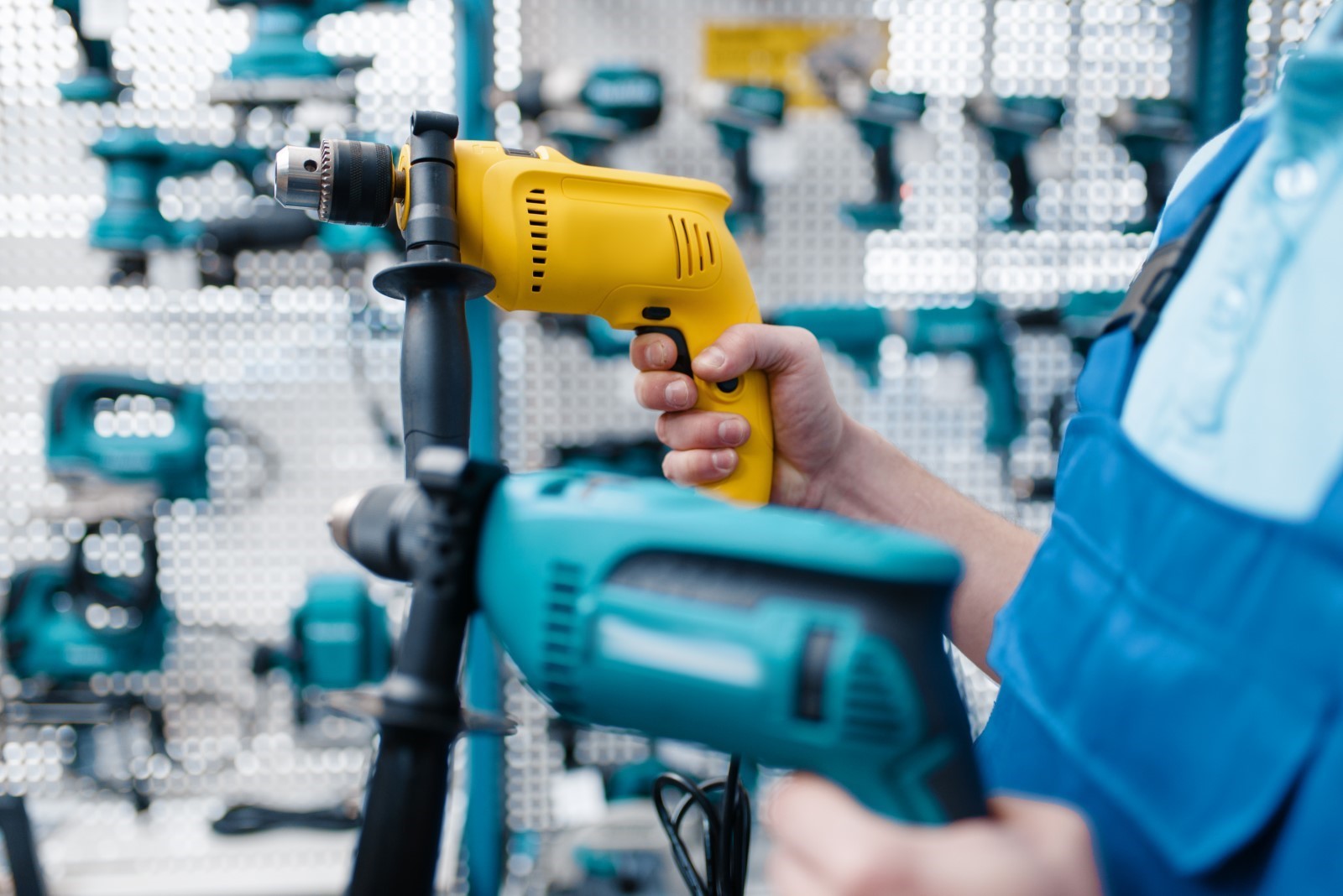4 Tips to Enhance Ergonomics in Assembly Lines for Maximum Efficiency and Worker Safety

Introduction:
To optimize assembly line operations and improve employee well-being, good ergonomic practices play a vital role. Implementing ergonomic principles not only helps enhance workplace productivity but also lessens the occurrence of workplace injuries and makes the work environment more comfortable for the workers. This article will explain in detail 4 ergonomics tips that can be implemented in the assembly line to maximize the safety and efficiency of the employees.
Why is Ergonomics Essential in Assembly Lines and Workplace?
Ergonomics is a scientific discipline that focuses on designing workplaces, processes and tools that increases the efficiency of people. It has a special place in the assembly lines as in this industry the repetitive nature of tasks leads to musculoskeletal disorders (MSDs). That is why ergonomic principles are implemented to enhance employee efficiency, productivity and comfort.
Ergonomics has some major applications at the assembly lines, including tool redesigns, adjustable workstations, and optimized presentation of parts. One example is height-adjustable assembly tables that help the different stature-bearing workers keep a proper posture and lessen the back and shoulder strains. In the same way, strategic placement of parts bins and conveyors lowers the need for twisting and reaching motions, which reduces the risks of repetitive strain injuries.
Assembly line workers are greatly influenced by the impact of ergonomics at the workplace. Lower physical stress and better comfort reduce the fatigue and risk of MSDs, which boosts job satisfaction, reduces absenteeism, and enhances life quality.
The benefits of implementing ergonomic practices in assembly line workplaces are also backed by statistical data:
-
In the manufacturing industry, ergonomics interventions reduce the MSD risk factors by up to 59% and boost productivity by 25%.
- By the implementation of comprehensive ergonomics programs, the worker's compensation costs were reduced by up to 90%.
The statistics strengthen the fact that significant financial and health benefits can be achieved for the workplace and workers by ergonomics prioritization.
4 Tips to Enhance Ergonomics in Assembly Lines for Maximum Efficiency and Worker Safety
Following are 4 actionable ergonomics strategies that increase productivity of workers and ensure their safety in the assembly lines environment.
Adjustable Workstations
Height-adjustable workstations are one of the best ways to improve the ergonomics of assembly lines. These workstations let workers of various heights hold proper postures and lessen the back pain and strain on the back, neck, and shoulders. Workers can customize the workspace by using adjustable chairs, tables, and platforms according to their individual needs, reducing musculoskeletal disorders (MSDs) due to awkward postures and repetitive motions.
Now one by one let's understand the different types of adjustable workstation types and their benefits in the assembly line environments.
Height-Adjustable Tables and Platforms:
Height-adjustable workstations are one of the primary ergonomics solutions for assembly lines. These let the workers lower or raise the work surface to match their personal height and reach requirements. These tables and platforms allow you to maintain a proper posture and reduce back shoulder and neck strains.
Some of the benefits of height-adjustable tables and platforms include that they accommodate workers from various statures, allowing a neutral body positioning to reduce the musculoskeletal stress, and improve visibility and accessibility of tools and parts.
Adjustable Chairs and Stools:
Workers who are in a seated position in the assembly line environments also need ergonomic seating. With the help of adjustable chairs and stools, workers can find the optimal seat height, seat tilt, and backrest to support the neutral spine alignment. That is why these adjustable chairs and stools are very important to reduce fatigue and back pain from long hours of sitting. They also let workers shift their postures and positions throughout the day. Lastly, adjustable chairs and stools distribute the weight of workers evenly, thereby improving blood circulation, and promoting better focus and productivity.
Modular Workstation Systems:
Some assembly line ergonomics solutions use modular, reconfigurable workstation systems. These help companies adapt the layout and workstations easily to the production needs and workers' preferences. Modular workstations are highly flexible and can be customized to the tasks and workers. They allow a rapid reconfiguration of the assembly line. Lean manufacturing principles such as 5S are also promoted by these types of workstations. Lastly these workstations integrate smoothly with other ergonomics accessories as well.
Companies can implement a combination of ergonomic seating, height-adjustable tables, and modular workstation systems to develop a comfortable and productive assembly line environment. The long-term benefits achieved by investing in these ergonomic solutions improve the employee's well-being and enhance operational efficiency.

Caption: Height adjustable workstations, tables and chairs for assembly lines.
Ergonomic Tool Design
The tools used by workers for longer hours can cause pain and discomfort in the hand and wrist muscles. That is where the need for ergonomically designed hand tools comes in. These tools include pliers, screwdrivers, and wrenches with features incorporated to increase comfort and lessen the stress on wrists and hands. These tools have the following ergonomic advantages:
Better Grip Design:
Tools with contoured handles and cushioned grips are suitable for the natural hand shape, which reduces the pressure points and improves the grip.
Lesser Vibrations:
Harmful vibrations are minimized by the vibration-dampening mechanisms that lower the risk of hand-arm vibration syndrome (HAVS).
Lightweight Construction:
The physical burden on workers is reduced by the lightweight materials that allow reduced fatigue and maneuverability.
Ergonomics Power Tools:
Tools like impact drivers and torque are the most physically straining. That is when counterbalancing mechanisms can be applied. One such mechanism is Torque Arms and Balancers. In these balancers' springs, counterweights and pneumatics support the weight of the tool, prevents muscle fatigue and reduces exertion. Another such mechanism is offloading the weight of the tool that lets the workers to keep a neutral posture, reduce awkward bending and reaching and lessen the risk of MSDs.
By implementing ergonomic practices for tool designs, following benefits are enjoyed:
- Reduced physical stress and lower muscle fatigue and joint pain.
- Increased focus and higher efficiency due to less discomfort.
-
Less absenteeism and more job satisfaction due to comfortable working conditions.

Caption: Ergonomics powered drills with better design to promote easy grip.
Strategic Parts Presentation:
The presentation of parts and components on the assembly line majorly influences the ergonomics and well-being of workers. The strategic positioning of conveyors, parts bins, and materials is vital for reducing physical strain and promoting efficient, comfortable work practices.
The main principle of strategic parts presentation covers that all required items are within the optimal reach and line of sight of the worker. In addition, if the frequently used items are placed at accessible height, the need for excessive bending, twisting and reaching is also minimized. This allows the worker to keep a neutral body posture, and reduce repetitive strain injuries like back pain, carpal tunnel syndrome and tendinitis.
Additionally, for optimal placement, the layout and design of the parts presentation systems enhance the ergonomics further. The physical strain is reduced, and accessibility is improved due to adjustable height conveyors, ergonomically shaped containers, and rotating parts bins. The parts presentation process is further streamlined by the implementation of lean manufacturing principles, such as visual management and just-in-time delivery.
Strategically planned presentation of materials and parts allows companies to create an efficient and ergonomically sound environment. This improves the well-being and health of the workers, with more economics benefits for the company due to lost workdays.
Implementing a Holistic Ergonomics Program
To fully get the ergonomics benefits for workers, companies must have comprehensive programs that span above the individual solutions. These ergonomics programs cover detailed assessments, employee training, and continuous improvement and monitoring.
Ergonomic Assessments:
A detailed assessment of the work environment is the basis of an implementable ergonomics program. This includes analysis of task demands, design of workstations, and tools used by employees. The assessment entails:
- Observing and analyzing the workers performing their tasks to pinpoint potential risk factors.
- Measurement of forces and physical stresses acting on the body during work.
- Conducting surveys among workers and gathering feedback about their concerns and experiences.
These assessments offer a detailed understanding of the ergonomics issues and allow a targeted solution.
Ergonomics Training:
Workers should be properly trained in the ergonomics principles and learn the proper body mechanics, accept the ergonomics risk factors, and usage of ergonomics tools. If you want to enroll your employees in a top-notch ergonomics course at the workplace, we at HAZWOPER OSHA Training LLC are offering ergonomics safety training. Our courses are available online, via Instructor-led programs and SCORM packages. So, visit our website and enroll today to learn according to OSHA and NIOSH guidelines.
Ongoing Monitoring and Improvement:
Ergonomic solutions need continuous refinement and monitoring. Companies must have comprehensive programs in place to evaluate ergonomic interventions regularly and recognize areas for improvement. This include:
- Tracking key performance indicators.
- Perform periodic re-assessments
- Taking reports from workers about their concerns.
By implementing these 4 tips assembly line workplaces can keep their workers safe, productive and comfortable. A healthy worker is more efficient for his business and contributes towards long-term business success.
Conclusion:
The only practical solution to optimizing assembly line operations and ensure the well-being of workers is through the implementation of an ergonomics program. The comprehensive ergonomics approach for workers in assembly line facilities develops a work environment that is beneficial for both the employees and the employers. This approach provides numerous benefits, such as better productivity, reduced injury rate, and a stronger and more competitive position for the company in the market.
References:
Physiopedia, Ergonomics, https://www.physio-pedia.com/Ergonomics
Progressive automations, 4th April 2023, How Ergonomic Workstations Benefit Packing and Assembly Lines,https://www.progressiveautomations.com/blogs/how-to/how-ergonomic-workstations-benefit-packing-and-assembly-lines





